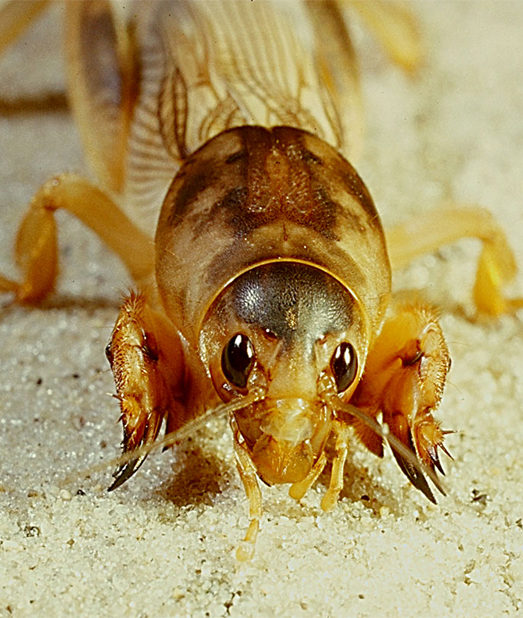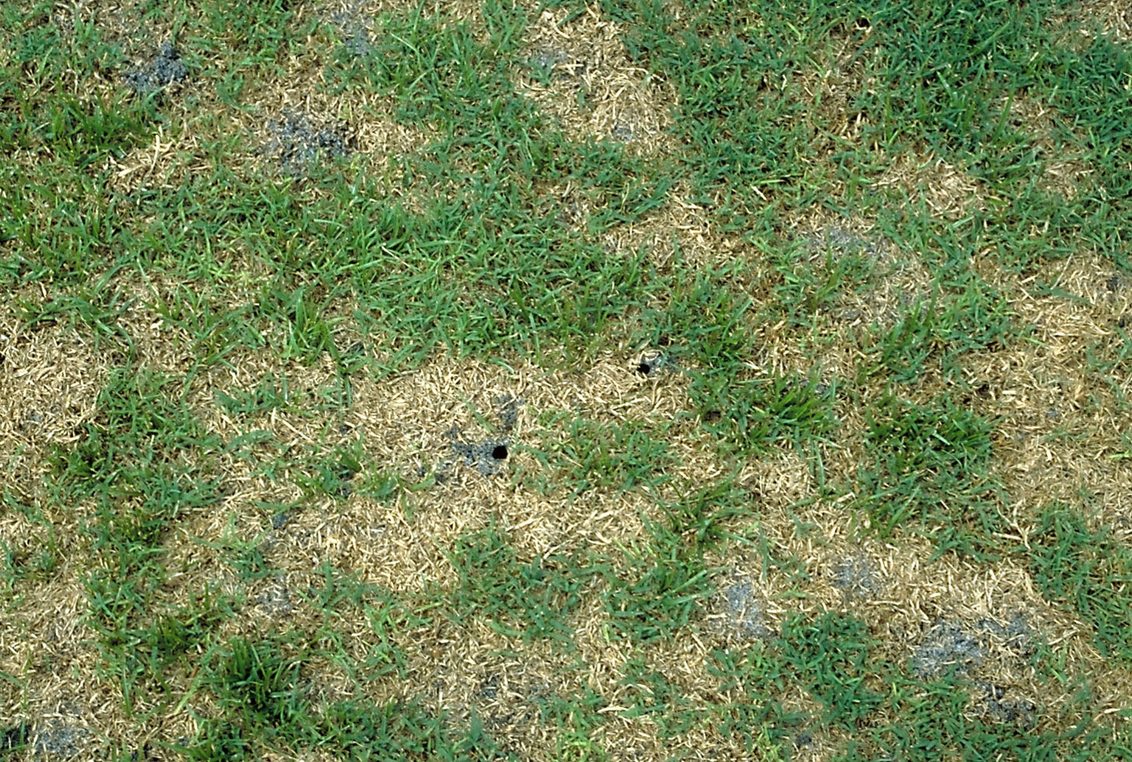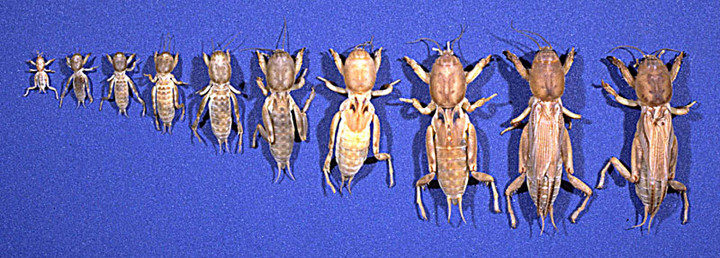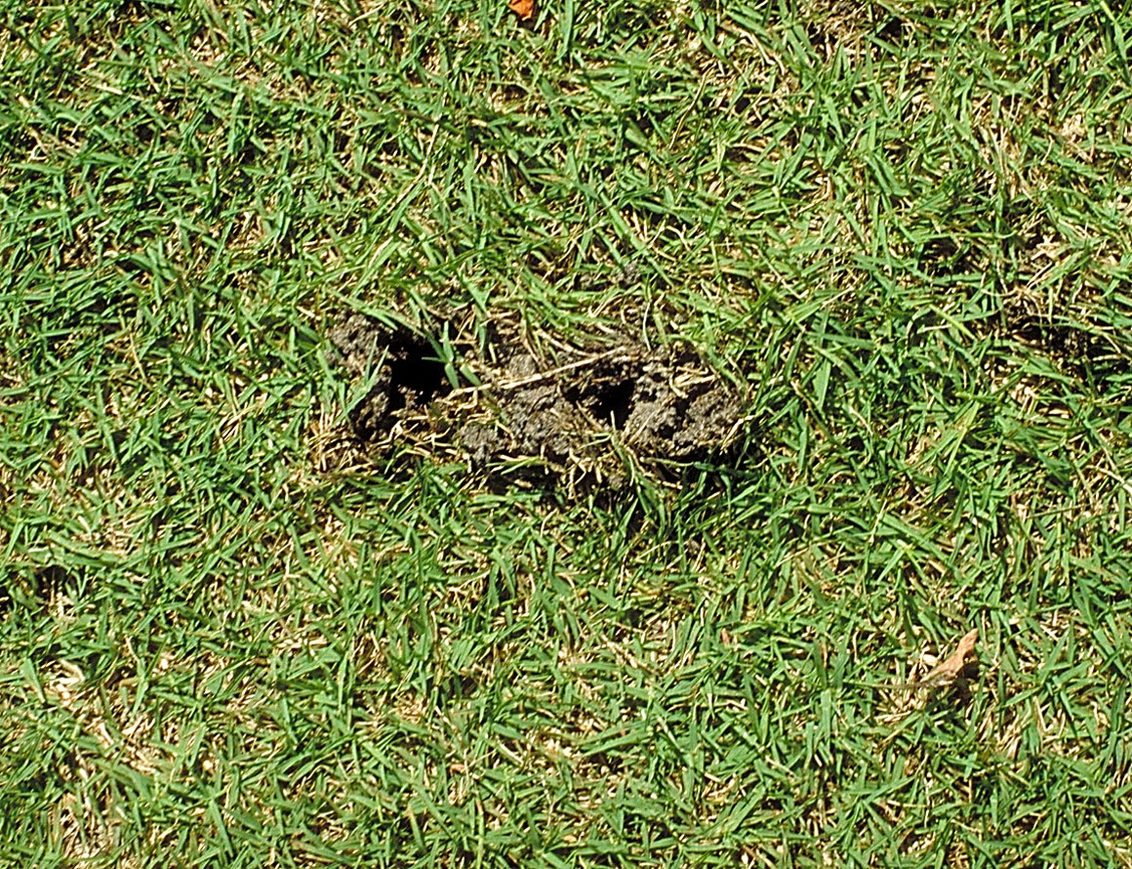Mole crickets are an insect pest of landscapes and golf courses in South Africa. Globally, approximately sixty-five species are distributed across seven continents with Antarctica, being the exception. The primary mole cricket species in South Africa is the African mole cricket (Gryllotalpa Africana), while the European mole cricket (Gryllotalpa gryllotalpa) and other likely species may also be found.
Mole crickets are members of the grasshopper and cricket order. The front end of a mole cricket has stout, claw-like front leg with the head and thorax modified to form a shield (figure 1). The front legs armed with claws push the soil to the side and the slanted shield like head push soil upwards. The hindlegs much like a cricket push the mole cricket forward. Mole crickets move through the soil in a swimming fashion.

Figure 1: The frontal portion of a mole cricket looks like a mole. Note the frontal arms and claws that are efficient means for shovelling soil to the side as the mole cricket moves through the soil.
Mole crickets feed on the roots and stems of warm season turfgrasses including bermudagrass (Cynodon sp.) kikuyugrass (Pennisetum clandestinum). and seashore paspalum (Paspalum vaginatum). Turf damage is caused by the tunneling activity of the mole cricket that breaks the root to soil contact (figure 2) Heavily damaged turf wilts and dies in irregular shaped patches or lines.

Figure 2. Mole cricket damage to a bermudagrass turf.
Tunneling is a sign of mole crickets. The African mole cricket and the tawny mole cricket tunnel near the soil/thatch interface feeding on plant roots. The southern mole cricket tunnel architecture is deeper and throughout the soil profile. Behavioral differences may be the reason for the difference in tunneling. African and tawny mole crickets are herbivores feeding on roots and stems near the surface, while southern mole crickets are carnivores feeding more widely in the soil profile.
Regardless of the species of mole cricket, their life cycles are similar. Mole crickets have an incomplete life cycle including egg, nymph and adult stages (figure 3). The nymphs appear to molt about seven to ten times before reaching adulthood. The African and European mole cricket life cycle is similar to that of tawny mole crickets in South Florida, USA.

Figure 3. The instar stages of the mole cricket nymphs from the first on the left up to the adult on the right
In late winter/early spring, males construct surface chambers with two openings from which chirp to call females for mating and egg laying (figure 4). Female mole crickets lay several masses of eggs in the soil during spring. The nymphs develop slowly over the summer season. By late fall new adults and nearly mature nymphs dig a little deeper into the soil profile to remain dormant during the cool period of winter.

Figure 4. The male mole cricket has constructed a surface chamber with two openings to call for the purpose to call a female.
Although the major activity of egg laying occurs in the spring, there is a degree of continuous reproduction, especially on golf courses, throughout the year. The result is an intermingling of nymphs in various stages of development, along with adults, occurring throughout the year.
Control:
Meridian insecticide suppresses mole crickets. For best suppression monitor mole cricket populations and life stage by applying a soap solution to the turf and monitoring for mole crickets surface emergence. A good indicator for when to apply Meridian is when the mole crickets are chirping in the spring. Apply preventatively when adults start to lay eggs, normally November / December.
If treating later than egg laying and once early instar nymphs appear, irrigate heavily for 2 days prior to application to bring the nymphs close to the surface. On the day of application apply Meridian late in the day around dusk and water in lightly.
